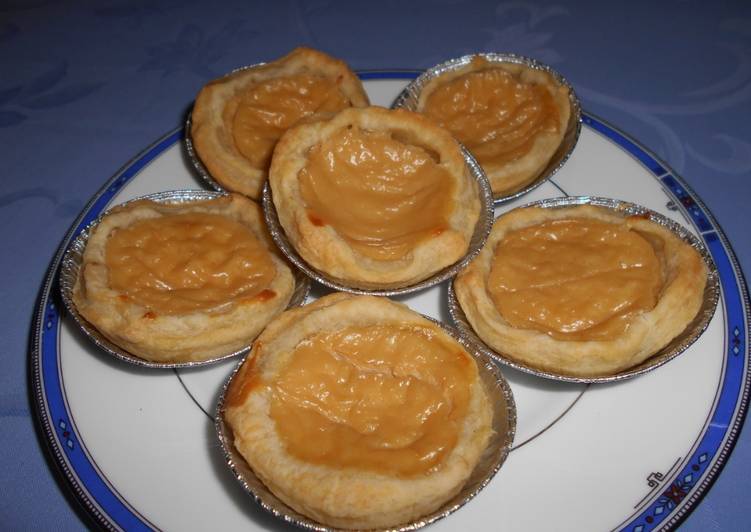Pastel de nata. This slightly streamlined recipe for the world-famous pasteis de nata, or Portuguese custard tarts, uses just few basic ingredients but requires numerous steps and a certain amount of finesse. The results are so worth it, though, you'll want to make a double batch. The extra moisture inside the sticky dough, activated by a very hot oven.
 The very first natas were created by monks at the Jerónimos Monastery in the civil parish of Belém, Lisbon.
These pasteis de nata, or Portuguese custard tarts, are a specialty of Belem, near Lisbon.
The pastries have crisp, puff pastry crusts that are filled with a luscious baked egg custard.
Vous pouvez cuisiner Pastel de nata using 2 ingrédients et 2 pas. Voici comment réussir que.
The very first natas were created by monks at the Jerónimos Monastery in the civil parish of Belém, Lisbon.
These pasteis de nata, or Portuguese custard tarts, are a specialty of Belem, near Lisbon.
The pastries have crisp, puff pastry crusts that are filled with a luscious baked egg custard.
Vous pouvez cuisiner Pastel de nata using 2 ingrédients et 2 pas. Voici comment réussir que.
Ingrédients de Pastel de nata
- C'est 1 de pâte feuilletée maison (voir ma recette précédente).
- Préparez de Pate a flan crémeux (voir ma recette).
You can make the pastry and filling up to several days ahead and assemble them right before baking. Because the egg whites were used for starching clothes, the nuns and the monks were faced with a surplus of egg yolks. Many have won awards including the O Melhor Pastel de Nata (the best pastel de nata ) award. Despite all of these new cafés, Pastéis de Belém hasn't really been affected.
Pastel de nata instructions
- Découper des cercles de pâte et les mettre dans des petits moules.
- Les mettre a cuire a blanc dans le four a 200 degrés 15 min. Ajouter la pâte a flan et remettre a cuire 30 min..
Portuguese Custard Tart, based on a Portuguese recipe from the XVIII century), filled with a traditional egg custard. To be correct, they are Pasteis de Nata, or Pastel de Nata if you are talking about them singularly. They are an institution in Portugal, where they were founded. Imposters around the world have tried to mirror these tasty treats, often producing something that might even resemble the original pastry, but the proof, as they say, is in the pudding. Outside Portugal, they are particularly popular in other parts of Western Europe, Asia and former Portuguese colonies, such as Brazil and Macau.